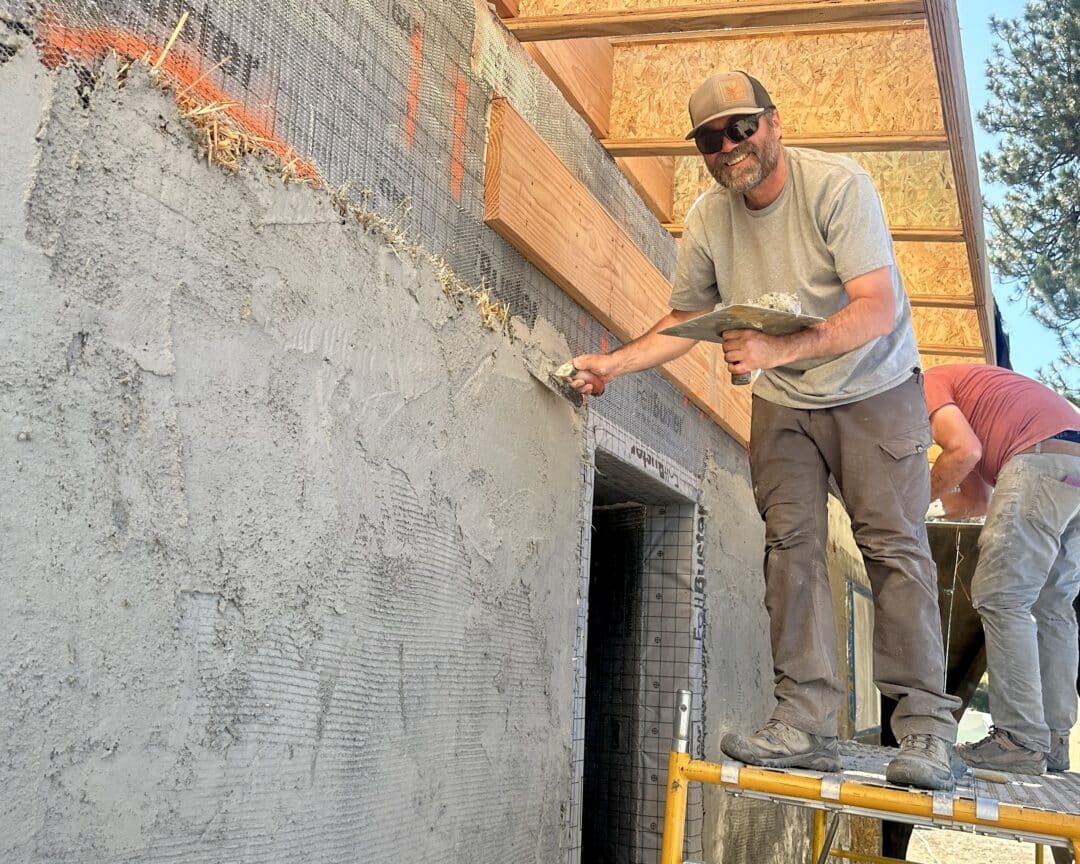
Natural Hydraulic Lime (NHL) plaster stands out as a commendable choice for straw bale houses, boasting exceptional workability and longevity. Here’s why we are huge fans:
- User-Friendly Application: NHL plaster is remarkably forgiving during application, offering a seamless and user-friendly experience.
- Formidable Durability: Renowned for its robust composition, NHL plaster exhibits impressive durability, ensuring a long-lasting finish for your construction project.
- Efficient Cure Time: In construction, time is money. NHL plaster accelerates the curing process, providing a comparatively swift turnaround.
- Beginner-Friendly: Even novices in construction find NHL plaster accommodating. Its ease of use makes it an accessible option for those new to the craft.
- Safety Priority: Unlike alternatives, NHL plaster is a secure material to work with, reducing health risks associated with caustic options.
This endorsement is not just a casual nod; it comes backed by the expertise of Michel Couvreux. Please continue reading to hear what he, an industry leader, has to say, and remember to check out the resources on strawbale.com community DISCOUNT PRICING at the bottom of the article.
All About Natural Hydraulic Lime by Michel Couvreux, Guest Writer, Lime Expert, Founder of TransMineral, USA & industry leader
The word “lime” encompasses a vast array of products, resulting in certain confusion when choosing the right product for the right application. Which one should you select: Hydrated Lime, Hydraulic Lime, or Natural Hydraulic Lime? Why? How?
I’ll first briefly mention Agricultural Lime or “Ag Lime.” This is NOT a lime that can be used as a binder in construction. It is, in reality, similar to limestone (Ca CO3), which has been crushed and is used essentially as a fertilizer. It is just a fine sand or aggregate with no bonding ability.


Lime, in different forms, has been used in construction since antiquity (plaster or whitewash of ancient Greece, Roman mortars); however, lime has gradually been dethroned by Portland cement (which appeared in 1840), which became widespread during the 20th century, even if its use should have been avoided in numerous applications.
Until the beginning of the 20th century, buildings have mostly been built using lime mortars, and generally, they hardly tolerate any intervention using current binders. Indeed, lime mortars have two main advantages that cement mortars do not have: they are flexible and allow the walls to “breathe.”
Lime is obtained by burning (calcination) limestone (calcium carbonate – CaCO3). Depending on the composition of the original rock, the lime will develop specific physical qualities which will define its uses. The quicklime (CaO) obtained by calcination is slaked by adding or spraying water (hydration), transforming itself into slaked lime (Ca (OH) 2). This is what we use as a binder in construction.
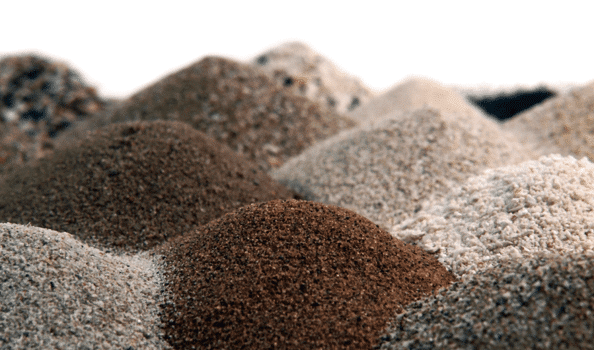

Lime mortars are mainly composed of a mixture of aggregates (sands), binder (lime) and water in varying proportions depending on the intended use. The slaked lime (Ca (OH) 2), with the water acting as a catalyst, recombines with the carbon dioxide contained in the air, allowing the mixture to harden. It is transformed into calcium carbonate (CaCO3) once the water has evaporated.
If the original limestone is very pure, the absorption of CO2 from the air is the only factor involved in the hardening of the mortar. In this case, the slaked lime produced is called Air Lime or Hydrated Lime.
If the original limestone contains clay (between 5 and 22%) or silica, this will give the lime hydraulic properties allowing it to begin its set in the presence of water. This lime is then called Natural Hydraulic Lime or NHL.
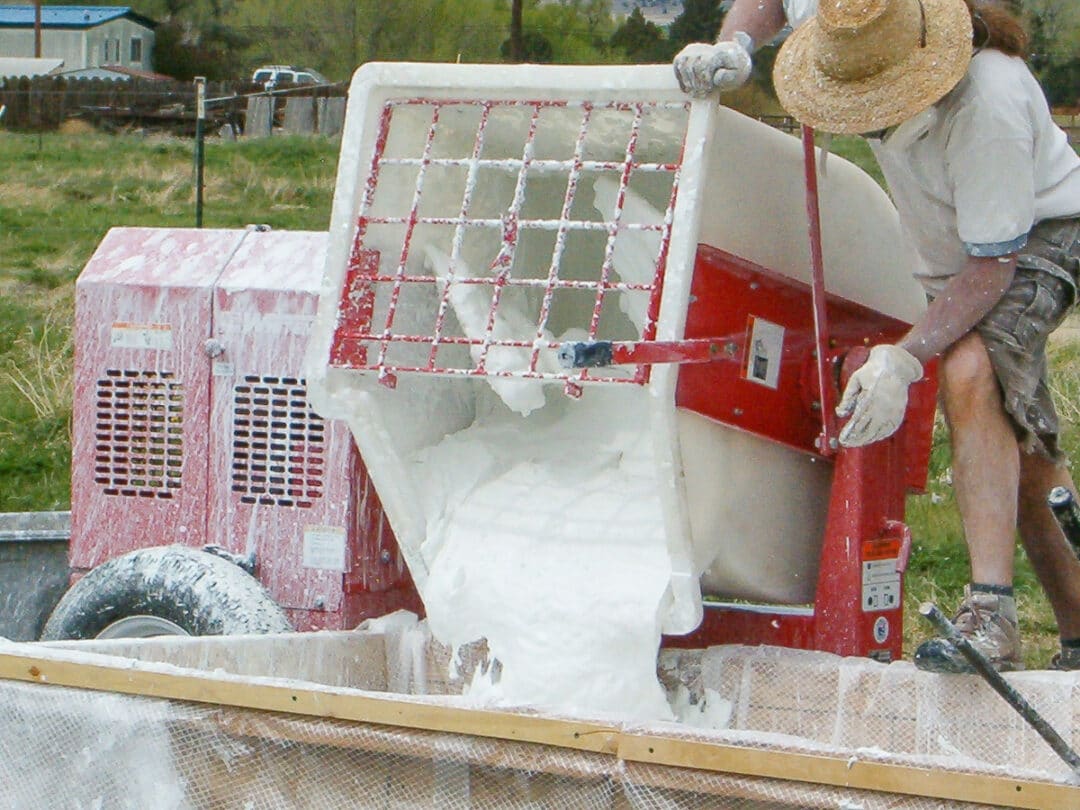
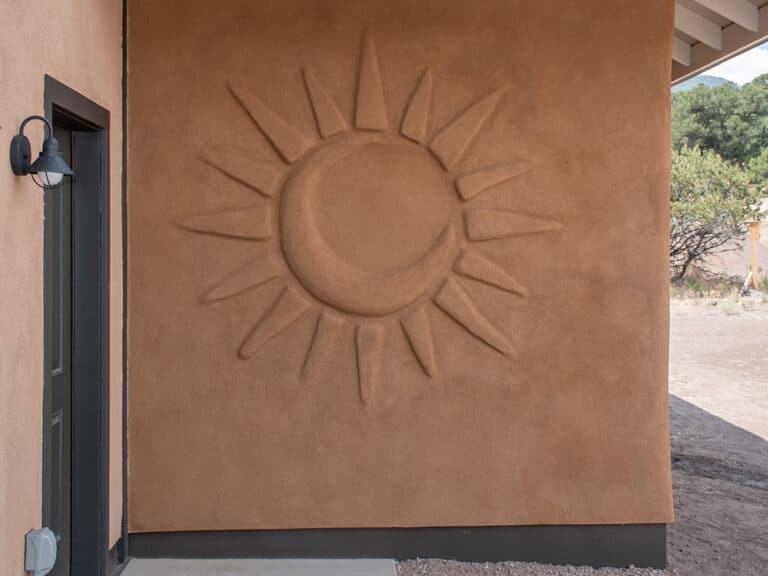
Air Lime or Hydrated Lime
In this category, we find two different products with different chemical compositions:
DOLOMITIC HYDRATED LIME
This is the most common lime used in North America. It contains a certain proportion of magnesium oxide. They are classified as Type N (Normal Hydrated Lime) and Type S (Special Hydrated Lime).
HIGH CALCIUM LIME
More common in Europe, it has a better reputation for purity and durability. They are usually classified by their purity CL 70 to CL 95 for the purest.
These Hydrated Limes are very workable, especially for fine plasters, interior finishes and paints or washes. However, they require a longer curing/drying period (minimum of 2 weeks). During that time, they are very sensitive to frost, heat, and humidity. It is rarely recommended for exterior application, especially in a humid environment.
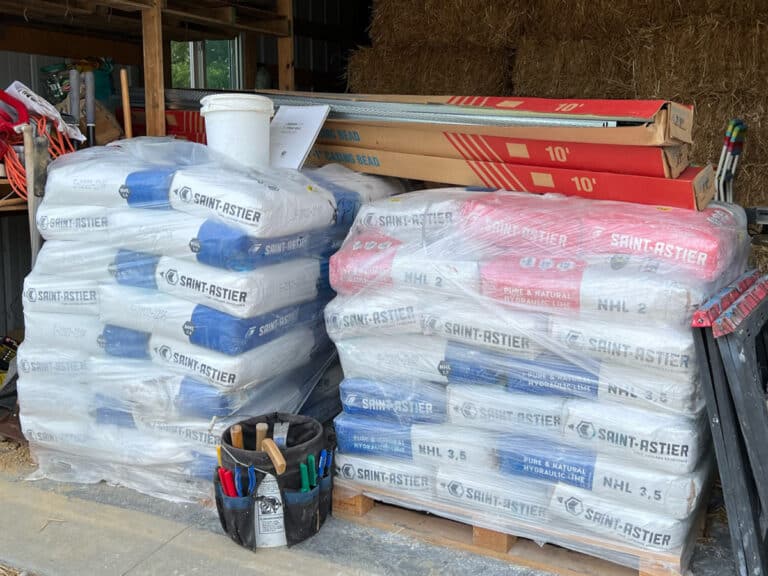

Hydraulic Lime or Natural Hydraulic Lime
It is essential to differentiate the simple appellation Hydraulic Lime (HL) from what is called Natural Hydraulic Lime (NHL).
HYDRAULIC LIMES
Their hydraulicity (ability to set under water) is artificially created by the addition or combination of products such as Portland cement, pozzolans, etc. Due to proprietary formulations, it is nearly impossible to know their exact composition. Most part of the time, Portland cement is part of the mix and often hidden under terms such as “hydraulic binder”. However, it is important to know that the addition of cement negates the advantages offered by the lime.
NATURAL HYDRAULIC LIMES
Not any addition of any kind by the manufacturer is allowed. This allows for the disclosure of its chemical composition, as no proprietary formula is involved. By the European Standards, the NHL has been classified into 3 different categories: 2, 3.5, and 5. Higher the number, the quicker the set and harder the mortar.
Natural Hydraulic Limes are very versatile and are used in numerous different applications. They are essentially used on sensitive projects like restoration and preservation and ecologically oriented projects. Their inherent qualities, such as elasticity, breathability, self-healing, durability, resistance to salts, suitable compressive strength, etc., make them the primary choice for high-quality work.
However, all NHLs are not equal. When confronted with the task of choosing the best product for a lime project, one should:
- Look at the history of the manufacturer and the history of each product. Newly introduced products should be approached with caution as defects or flaws can take years to develop.
- Ensure that the lime complies with ASTM C141 and EN-459 by requiring that the manufacturer provide the documentary evidence; complete with test results.
- Require detailed testing data with real numbers, not only to check the conformity to standards, but also to check the performances of different mixing ratios.
- Select a manufacturer that will provide technical assistance, guidance, and recommendations. Each project is different and the manufacturer’s contact is essential when looking for the best performance.
- Verify that the manufacturer or his representative is insured and provides the necessary warranties.
Conclusion
Clearly, the plastering of your straw bale home and all the hard work you’ve invested in it is a critical area of decision-making. Most of our workshops use a 3 coat Natural Hydraulic Lime (NHL) system on the exterior as it has excellent durability and is reasonable in application.
However, many options are available, and your ultimate decision will rest upon your unique project priorities. We recommend expanding your knowledge of plastering through hands-on experience at local projects, workshops, books, etc.
Strawbale.com Community Discounts
We receive a small referral commission if you use these discounts. You absolutely don’t have to use them, and we appreciate your support of our ongoing development of resources for straw bale builders!
On the West Coast or in the Central States? We are currently sourcing new partners to share with you.
On the East Coast? Reach out to Limeworks (www.LimeWorks.us) and mention our vendor code ‘Strawbale.com’ to receive a discount on your initial purchase from them. They’re located in Pennsylvania and are very knowledgeable, as well as helpful. (You may have heard of them referred to as ‘deGruchy’s’.)
You’ll also find in-depth information on plastering technicalities on both websites. We highly recommend spending time exploring their website resources.
Now you know how amazing the NHL product is, and it’s time to get started on your project, grab some discount pricing, and get your home looking incredible!
But What About Pozzolanic Hydraulic Lime (PHL)???
Is it the same as NHL? Technically not. See Michel’s note above on hydraulic limes, but there are PHL products on the market that behave like the mined naturally occurring NHL.
We expect the availability of these US-based products to expand and will provide future updates, such as the exciting advances happening over at EarthHaus Plaster under Ryan & Rose Chivers’ expertise. Read more on EarthHaus’ story and for the latest information on their plaster products here. Currently, they have a full line of finish products.



26 Responses
Thank you for the information and for the available discount! This article provides a lot of details about why lime is so good for straw bales. I was leaning towards using hydraulic lime, and the discount has sealed the deal. Have a great day.
Thanks so much for this great article! It answered questions I didn’t know I had!!!!
Thanks for the article. My question is in regards to humidity: Are strawbale homes a good choice in humid climates (specifically those found in the southeastern US)? If so, I’m guessing an NHL 5 would be better due to its quicker setting time. Right?
Thanks again
Hi James. Humidity can be challenging for straw bale homes. I recommend that you include an Energy Recovery Ventilator (ERV) in your design so that you can help mitigate the moisture levels in the home. In terms of plaster, I would suggest that 3.5 would be the right choice for you; however, I think following up with your lime supplier would be the best choice as they can tell you for sure. The slower the set of the plaster, the better. This is always true as long as the slow set is not interrupted by freezing temperatures (probably not an issue for you). The higher the number of NHL, the less flexibility it has, so that is a down side of going with a stronger mix. I prefer to stay with 3.5 as often as possible and get great results with it.
Hello Andrew,
I have been torn between planning my strawbale build using natural clay/straw on the outside walls or lime plaster. I understand that if I use lime that I should avoid contact with skin, unlike natural clay. Is this correct, and could you tell me any disadvantage of using just natural clay/straw. I think I would prefer clay from the handling point of view, ie it can be reworked and easily touched up.
I live on Vancouver island which is quite a damp climate. Any advice you can give would be much appreciated.
Hi Graham. An exterior earthen/clay plaster, especially in your location, will require a TON of maintenance. Being free of any hardening binders, you basically have a plaster made from water soluble materials. When it rains, they hydrate and will wash off the wall without proper maintenance. Lime is a much better choice for your exterior plaster. Natural Hydraulic Lime is a great choice because it does not burn the skin the way hydrated lime can. It will still dry you out, but it’s not terrible. You cannot rework areas the way you can with clay plaster, but that is clay plaster’s downfall as well as it’s advantage as described above.
Great explanation of hydraulic lime, but what are “pozzolans” that are mentioned in the article?
Hi TK. Nice to hear from you my friend!!! I took this definition from Wikipedia. “A pozzolan is a siliceous or siliceous and aluminous material which, in itself, possesses little or no cementitious value but which will, in finely divided form and in the presence of water, react chemically with calcium hydroxide at ordinary temperature to form compounds possessing cementitious properties.” In other words, when in combination with lime and water, it becomes a hardening agent that allows the lime to cure under water and makes for a stronger finish.
Thank you for this article. It is full of information that I have wondered about so it’s nice to hear the answers in one place. I live in a cold climate and so plan to use a mix of lime and cement to strengthen the plaster. What do you thin k about that idea?
I would recommend against that Jordan. Cement does not breathe as well and it has less flexibility. Further, it’s cure time is much faster than lime so it interrupts the lime cure cycle which lessens the value of the lime in the mix even more. If you live in a cold climate, I would recommend that you use NHL 5 as it is very strong, but without all the down sides of cement.
Can I add color to Natural Hydraulic Lime? What is the color of the finished wall if I can’t add color? OI assume it is white.?.?
You can add color Elaine. In fact, when I work with Transmineral, I can add almost any color from the Benjamin Moore paint line. the darker colors require too much pigment and so cannot be added to the mix. They make special pigment packs that are added to the finish coat. It’s a lime product so made specifically to work with the plaster. If you don’t add color, the finish product will be white (if you use Ecomortar) or will be shaded by the color of whatever sand you use.
Andrew, thanks for the response. I’ve done a bit of digging and found that the average humidity levels at a few of the places where you held workshops this year (TX, NE, OR) are right around what I’m dealing with in AR.
In those conditions is an ERV still the way to go? I only ask because I’m working on a completely off-grid design, and as much as possible, I’d like to do passive heating/cooling.
Thanks for your help,
James
I would still recommend the ERV. I know that is a tax on the solar system (I live 100% off grid and know that every little bit matters), but it is worth it.
Thank you so much for this article! Lots of helpful information. What about humidity inside the structure? I am hoping to build a straw bale chicken coop and I wonder how the NHL would hold up against inside humidity and possible chicken pecks? Also, is it easily washable? Thanks!
Thanks Stacy! NHL is very strong and, once cured, will hold up to chicken pecks. That takes at least 15 days to reach that kind of strength from the final coat application. I would suggest using a metal roofing material as a wainscoting which will be MUCH easier to clean. Having had chickens for years, I know exactly what you are up against. 🙂
Thank you for all of your informative articles. I know you mention in a previous article that you strongly advise against mixing plastering materials, but I came across an article (which I of course now can’t find to reference) that felt that the NHL set to quickly which made it unworkable and advised to mix it with hydrate lime both to improve its work-ability and make it more affordable. They recommended a 1:1 ratio. When reading about NHL I felt intimidated because of the quick set time and the price. Any thoughts on a combination of the 2?
Hi Danielle. I totally disagree about the quick set time. I work with NHL all the time and love it. It has a very workable time line and that can even be improved by mixing the material up to 14 hours in advance of application and then remixing right before use. That provides for excellent workability. I would not bother combining hydrated lime with the NHL. The quality of hydrated lime is so much lower than the NHL and you will end up with an inferior product in the end. Stick with the NHL.
I am working on a house with San Luis Sustainability Group and they claim it’s ok to use cement stucco, with some lime, on straw bale buildings. Are the bad effects only really really long term? They also say using gypsum and cement mix is ok for interior ceilings in a straw bale house – I’m concerned it will make for a hard finish and acoustic echoes. How about using galvanished wire mesh and fixings into straw bale walls? Will it condense or not. This is all as relevant to central coast California. There seem to be no lime plaster or limecrete experts around here, do you have any suggestions how to manage working with such materials in this hot climate? I want the soft finish and flexibility but I don’t want it all to crack off in the heat.
I am very clear about not using cement in my own projects. I have seen too much damage from the material over the life of the home. Most folks who say it’s fine to use are saying that because it’s easier for them, and for no other reason. I would steer clear of cement. I don’t have issues with the mesh and I am a big proponent of using it. any condensation will be drawn into the plaster and removed from the home vie evaporation.
I am living in my strawbale house I built 6 years ago. We have an earth plaster on the interior and a lime plaster on the exterior. I believe it is important to do limewashes occasionally. Is this true? What kind of lime should be used for this? How many coats are needed? What are the best techniques to use? What are some tips and tricks? I keep finding articles that talk about how important it is to do a limewash, but I find very little in regards to HOW to properly do a limewash. Thanks!
Hi Eric. I think t depends on the quality of your lime. If you use NHL (especially a good quality one) then you are less likely to need lime washes. If you do require a lime wash, I would use the same material as the original lime in a watered down version. Be careful though because too much water means that the plaster can “chalk”, get dusty during the curing process. You will want the lime wash to be thin so that it can cure fully and relatively quickly. I would only bother with a lime wash if I a) wanted to change the color of my plaster or b) was seeing cracks that would benefit from the application of more lime. Keep in mind that your plaster WILL CRACK, no matter what. That’s one reason why we do a three coat application: to prevent those cracks from telescoping back into the straw. Some cracks are normal. Large cracks will require more than a lime wash to fix as they likely represent structural mistakes in the plaster or plaster prep. Small spider cracks are the ones that will benefit from a lime wash should you decide to apply one. In terms of the number of layers of lime wash, that depends on your goal. If you are changing the color or filling cracks, then you would apply until you have reached your goal. Hope that helps…in a nut shell.
Thanks for the information. I want to construct some interior walls (non-structural) with a lime/sand/shredded coco mix. I am in a more remote area of Costa Rica. The only thing I have been able to find, so far, is CaCO3 at an ag-store. Can you advise what to do in order to be able to use this? If I heat it will it change it to a form I can use to bind? Thanks for the help!
Hi Michelle. That’s beyond my scope of expertise, so I can’t help with that. Sorry. You might contact the lime suppliers directly or read up on some other comments in some of my lime posts here on StrawBale.com. There have been some comments from very strong experts over the years. Buena suerte
I live in a desert are, hotter’n heck in summer and sometimes very cold in winter.
I built a straw bale timberframe awhile back with natural clay, straw, sand finish … and the birds are having a hayday making holes all over the place. I want to put on another coat of mud and then a final coat with lime plaster. Is that do-able? What would you suggest to seal / protect it …
Hi Lillian,
Sorry to hear about the bird situation with your clay plaster.- bummer! Adding another layer of clay plaster is the way to go. Stick with just clay, skip the lime finish. Mixing clay and lime can be hit or miss. Applying a thin lime coat over clay often ends up failing. The lime layer is like a brittle eggshell, and it doesn’t mesh well with clay’s high expansion. Could lead to delamination headaches. If you’re thinking of sealing the clay, check out linseed oil or sodium silicate. There are pros and cons to using sealers on clay plaster, but it might suit your needs.